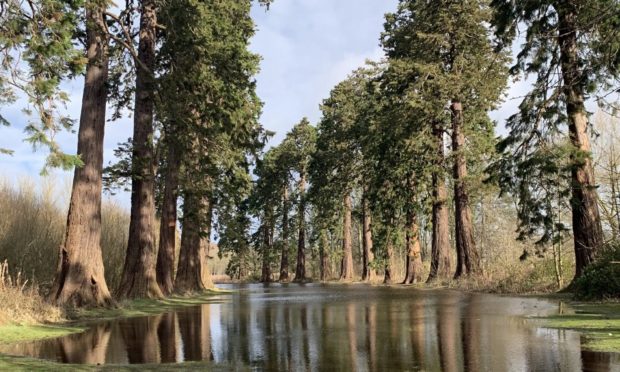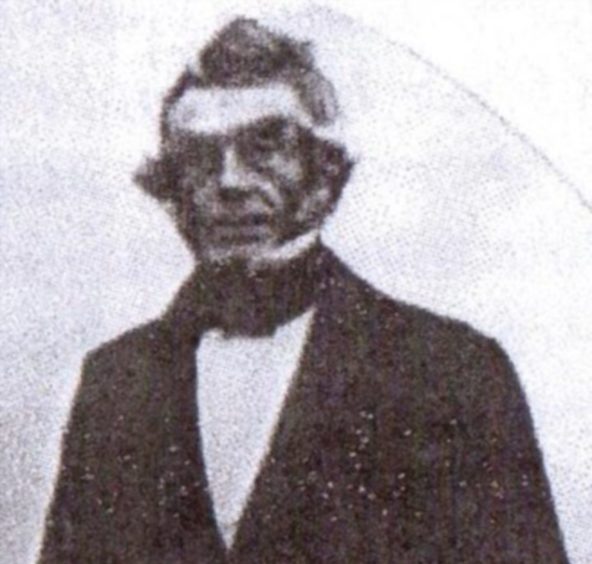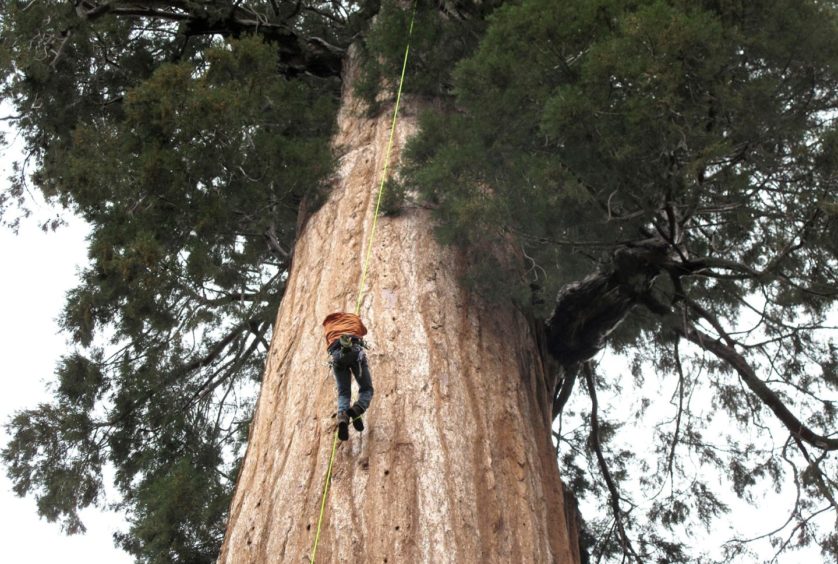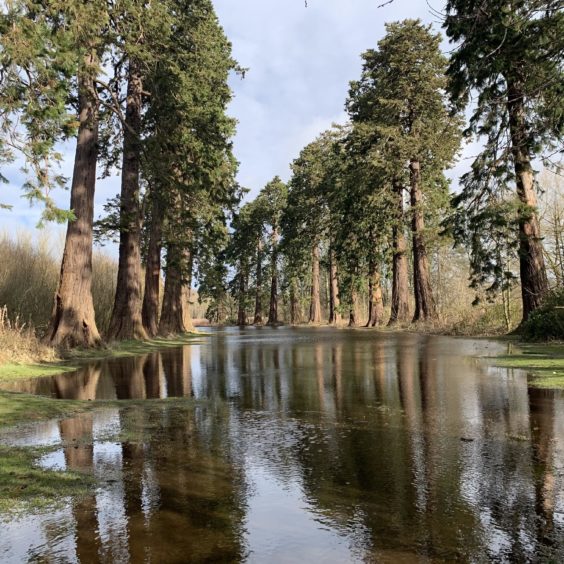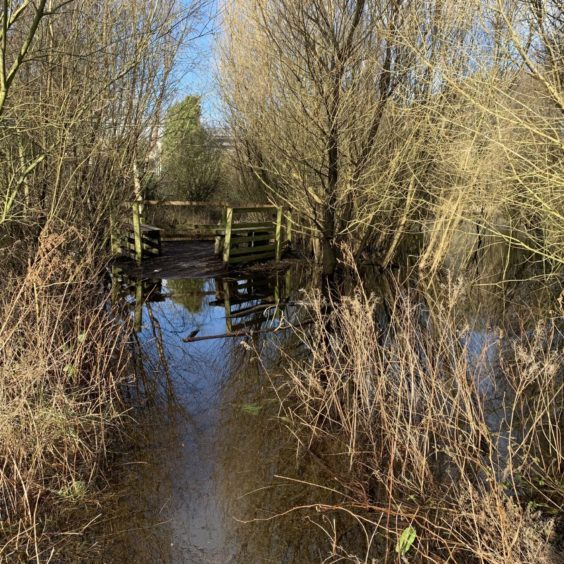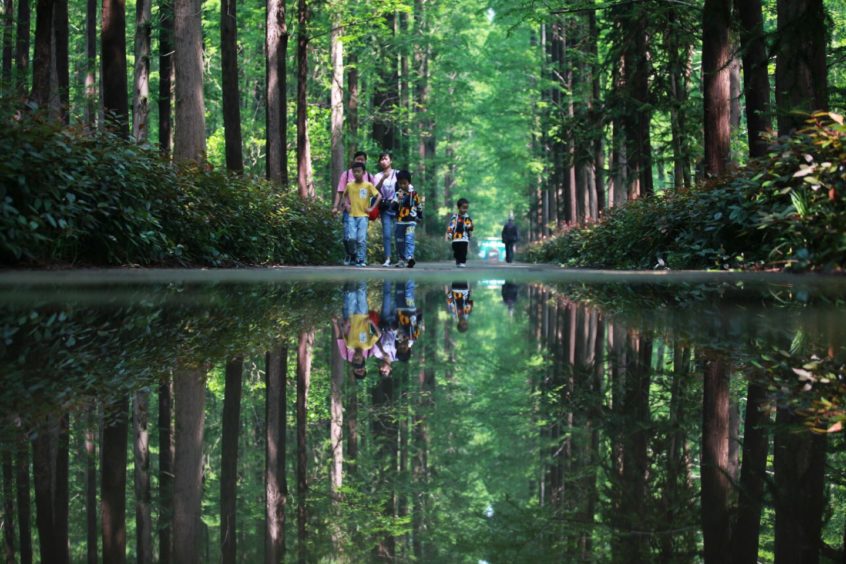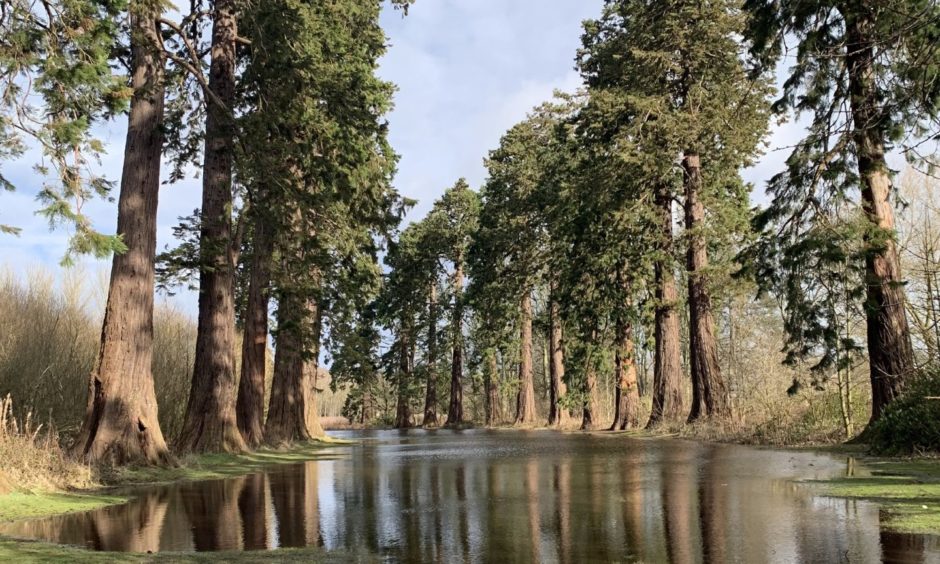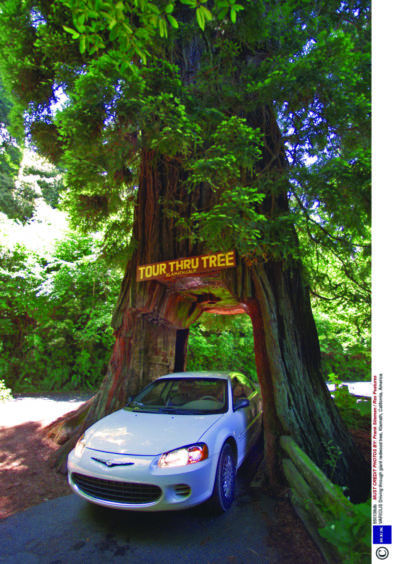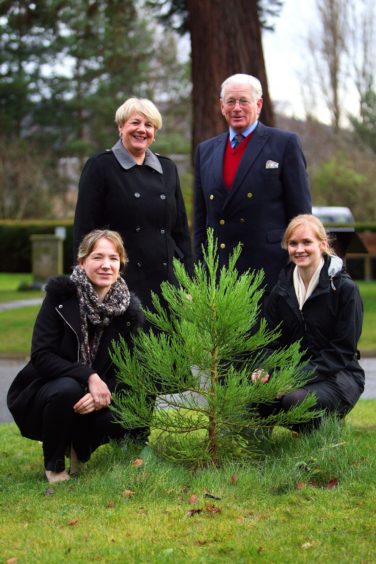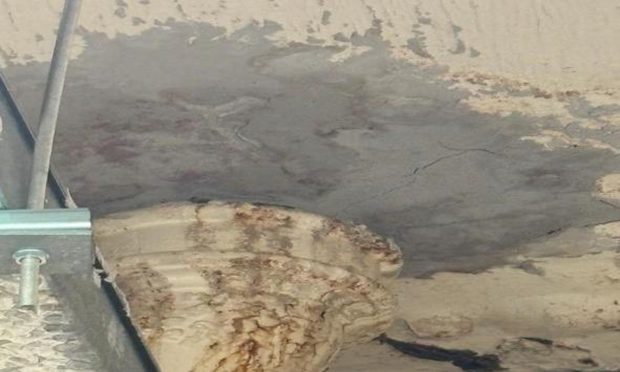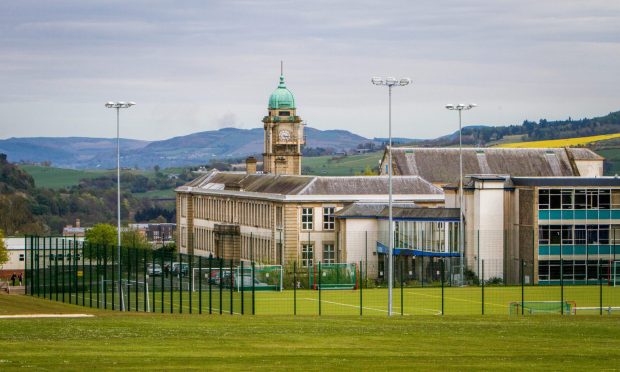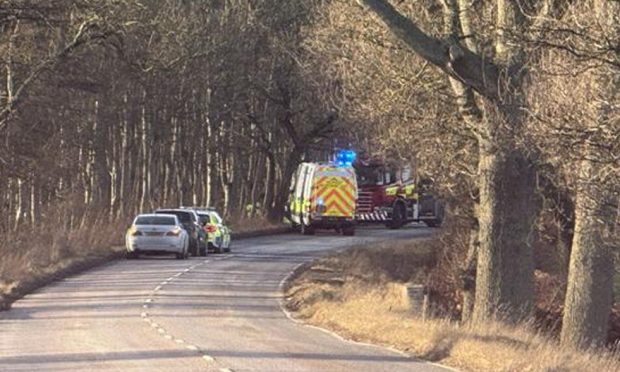Michael Alexander speaks to founders of the Scottish Redwood Trust who want to see further action taken to safeguard the future of internationally significant trees growing in Perthshire.
It’s three years since Patrick Matthew, a Carse of Gowrie grain merchant, fruit farmer, forester and landowner who contributed to the world’s understanding of horticulture, silviculture and agriculture in the 19th century was officially recognised as having been the first to introduce a species of giant redwood trees to the world outside of their native California.
The United States National Park Service formally recognised that Patrick Matthew and his son John D. Matthew were the first to propagate and introduce Giant Sequoias anywhere in the world outside of their native Sierra Nevada habitat.
The news was welcomed by horticulturists and campaigners in Scotland who had been working to have the Matthews’ efforts recognised.
Life and times of Patrick Matthew
Patrick Matthew, who published the basic concept of natural selection before Charles Darwin published Origin of Species, was born in 1790 on a farm near Scone Palace in Perthshire.
Educated at Perth Academy, he dropped out of Edinburgh University following the death of his father to take over the running of the property estate at Gourdiehill in the Carse of Gowrie.
Over the years he successfully nurtured, cultivated, and transformed much of the estate’s farmland and pastures into several large orchards of apple and pear trees, numbering over 10,000.
While early Spanish missionaries have been credited with introducing to Europe the much more common Coastal Redwood in the late 1700’s, Patrick Matthew and his son John are credited with the introduction of the much rarer Giant Sequoias which had not been discovered until the late 1840’s and then introduced by the Matthews to Europe in 1853.
In 1853, John sent botanical tree specimens from America back to his father.
These included the first seedlings known to have been planted in Europe of the Giant Redwood (Sequoiadendron giganteum).
A group of trees of these species still thrive near Inchture.
Others still grow at Gillies Hill, near Stirling Castle.
Yet despite the significance of the redwoods’ heritage and their towering height, concerns have been raised by local environmentalists that Perth and Kinross Countryside Trust website’s interactive map for Big Tree Country does not list or map any of the Inchture redwoods as ‘big’ trees.
Why are redwoods not included on Big Tree Country list?
Fiona Ross, a co-founder of the Scottish Redwood Trust and a member of the Carse of Gowrie Sustainability Group which has been promoting the role of Patrick Matthew in recent years, said they have asked a number of times for the redwoods to be included on Perth and Kinross’ Big Tree Country list.
In a separate issue, concerns have also been raised recently about standing water between the redwood avenue trees at Inchture.
Quoting from recent correspondence to Peter Quinn, director of the Perth and Kinross Countryside Trust, from Syd House MBE, retired Scottish Forestry Commission, who is on the Scottish Redwood Trust management team, she said the problem appeared to be rooted from a time when the A90 was upgraded.
The roadworks cut across the avenue and blocked some of the natural drainage leading to the situation now.
In the short term, PKC undertook some remedial work to keep the wetland area but channel the water away from the redwood avenue.
With recent flooding unprecedented in 30+ years, however, Mr House recommended urgent action was now needed to further improve drainage otherwise standing water might kill the shallow roots and eventually the trees, making them more susceptible to disease and being blown over in high winds.
“The heritage is that this avenue is the original driveway to Rossie Priory, nearly a kilometre long from Inchture village to the house,” says Fiona.
“Obviously, the entire avenue was destroyed by the A90.
“The trees, whilst not Patrick Matthew originals (ie from the seeds his sons sent back from the gold rush in 1853), have been DNA tested and there is evidence to suggest they are from the same ‘glade’ from where the Matthew ‘mother tree’ stood.”
Endangered species
According to the Scottish Redwood Trust website, California redwoods are now listed as A2 status classifying them as ‘endangered’ by the International Union for Conservation of Nature (IUCN) and are now A2 status classifying them as ‘endangered’.
The Dawn Redwood, originating from China, is ‘critically endangered’.
This is mostly due to climate change due to drought and human development, meaning redwoods are in significant decline in their home territories. The Scottish climate provides the ideal environment as a ‘seed reserve’.
Yet she thinks more needs to be done to conserve what we have.
Fiona adds: “The redwood avenue at Inchture is one of only two in Scotland.
“The other is in Benmore Botanic Gardens which has the tallest one in the UK, therefore the Inchture trees are of significant importance.
“These particular trees would not have been planted earlier than about 1860, perhaps a few years later, so they are about 160 years old.”
Standing water a danger to Perthshire redwoods
Fiona explained the Scottish Redwood Trust was a Scottish venture but had been co-founded by American redwood aficionado and botanist Peggy Edwards, who lives in Santa Cruz, amongst glades of coastal redwoods. She had to evacuate last year in the Californian forest fires.
Commenting on the ground conditions, Peggy says redwoods of the type at Inchture are not tolerant to flood water.
However, it would depend how long the trees had been close to standing water and whether the flooding between the rows happens every year.
Another issue, she says, is whether or not the standing water is clean or full of toxins.
“Water tables can act like a sponge and move water upward – it wouldn’t hurt to do a water quality test,” she believes.
Peggy adds: “Coast redwoods, Sequoia sempervirens, do not do well with wet feet, preferring a maritime climate (winter rains and summer mist/fog) like that along the Pacific Coast.
“They like well drained soils and lots of rain.
“The dawn redwood, Metasequoia glyptostroboides, is much more tolerant of wet soils and standing water than the other two redwood species.
“Sierra redwoods, Sequoiadedron giganteum, like those that are found at Inchture, are native to the Sierra Nevada at mid elevations, an entirely different environment than that in which you find the coast or dawn redwoods.
“Entire groves of Sierra redwood, most of which are on granitic-based residual and alluvial soils are sometimes “flooded” months of the year by melting snow.
“So Sequoiadedron giganteum favors areas of surface or subsurface drainage.
“Surface drainage is from water draining off the surface from rain, snow or flooding from creeks.
“Subsurface drainage is from springs, cracks and fissures pumping water upward or from a high water table.
“Despite Sequoiadedron giganteum’s tolerance of moist soil, the soil must be well drained – they will not tolerate periodic flooding – especially not in winter – and will not tolerate standing water.
“Soil saturated from periodic snow melt is very different from a long period of standing water.
“That said, after a heavy rain in the Sierra Nevada, giant sequoia groves will contain puddles that last for a while.
“They require well-drained soils with good aeration; standing or stagnating water may drown the roots and kill the trees.
“In the trees’ native habitat during the summer drought the water table drops down two feet.
“The rest of the year it is about a foot or less down.”
‘Limited resources’ in Big Tree Country
As a charity with limited resources, Perth and Kinross Countryside Trust says Big Tree Country already lists 18 major sites across Perth and Kinross for the public to enjoy.
Funding for Big Tree Country mainly comes from the Supporting Big Tree Country scheme promoted by their supporter hotels, all of which have been closed for long periods recently due to Covid-19.
“We have advised Fiona Ross to contact the landowner and Perth and Kinross Council to resolve the flooding issues which she believes were caused by the upgrading of the A90,” a Perth and Kinross Countryside Trust spokesperson says.
Carse of Gowrie councillor Beth Pover shares the concern of the Scottish Redwood Trust and more specifically, the concerns expressed by Fiona Ross and others, in relation to the future of the redwood trees in Inchture.
“As a councillor, I am the link between this group and Perth and Kinross Council,” she says, “and continue to offer support to ensure all that can be done is being done to secure the future of these wonderful historic trees.
“I understand drainage is an issue and I have asked the council for their assessment of the situation.”
History of the redwoods
The accolade of bringing the first Sequoia giganteum redwoods seeds to Europe was initially given to William Lobb and John Veitch from Exeter by the Gardener’s Chronicle on December 24, 1853.
However, some 13 years later the publication retracted their statement, recognising Patrick Matthew as being the first.
Sequoia sempervirens (coast) were brought to Russia in 1840 and from there to Britain in 1843.
Theodore Hartweg, a collector for the Horticultural Society of London introduce seeds to Britain in 1846.
The oldest two coast redwood trees in Britain are at Rossie Priory in Perthshire, and at Smeaton House, East Lothian and planted in 1845 and about 1844 respectively.
Coast redwoods are the tallest organisms on earth, if allowed to grow the trees planted in Scotland may reach 300′ or more in height given 2000+ years.
Metasequoia glyptostroboide (dawn) was discovered in the Hupeh Province of China in 1941, and Cambridge University Botanic Garden planted the first Dawn Redwood on British soil in 1949.
It’s name derives from ‘metasequoia’ meaning “like a sequoia” and “glyptostroboides”, due to it’s likeness to the Chinese swamp cypress: Glyptostrobus pensilis. It is the most endangered of all the redwoods.
In 2016, The Courier reported a remarkable war of words involving Dr Mike Sutton over the work of Patrick Matthew and Charles Darwin.
